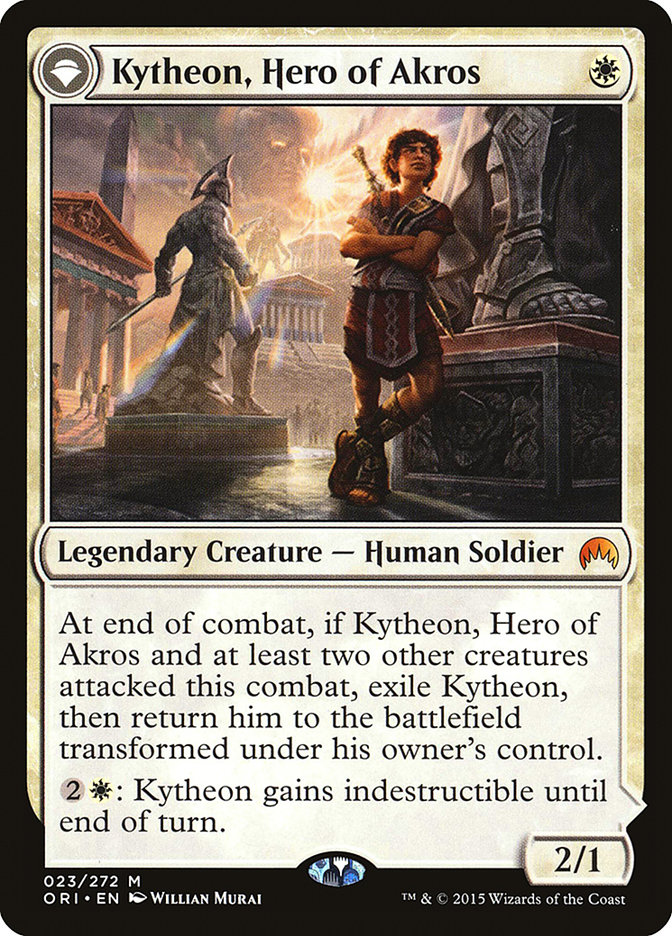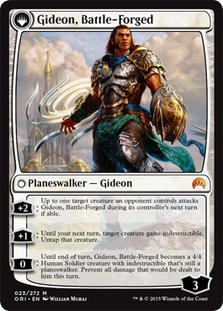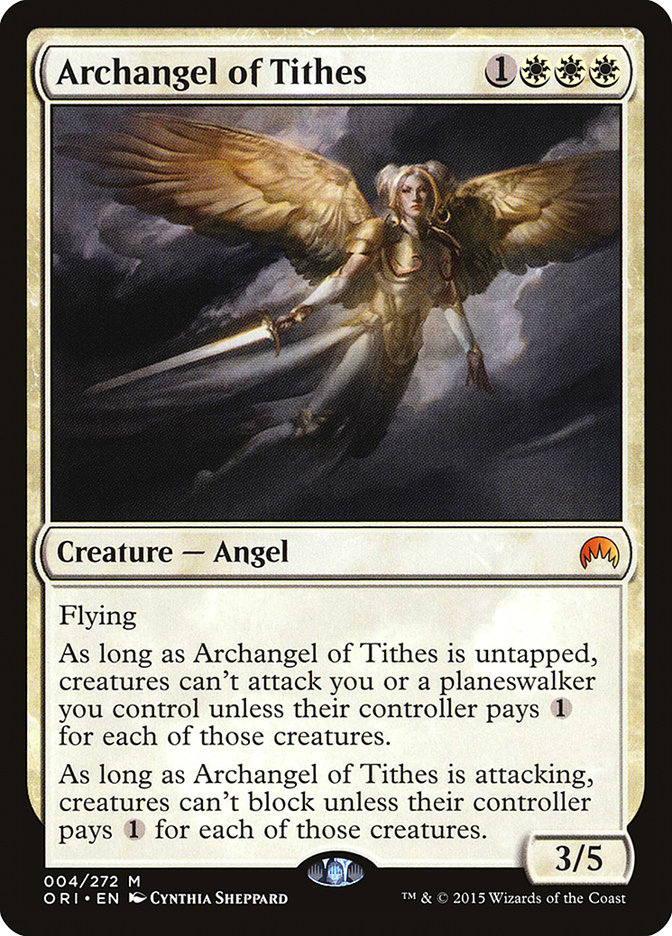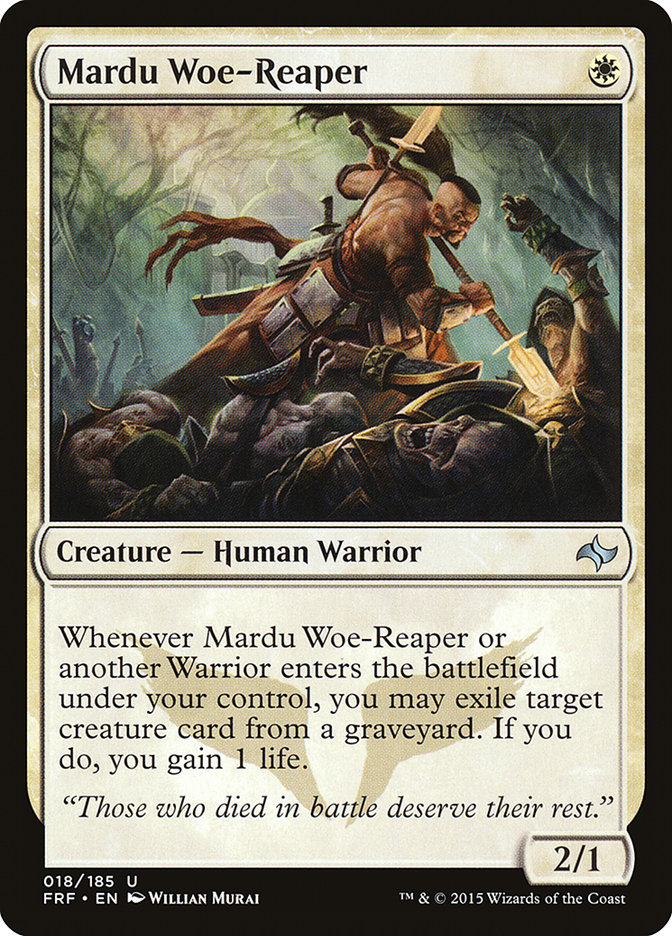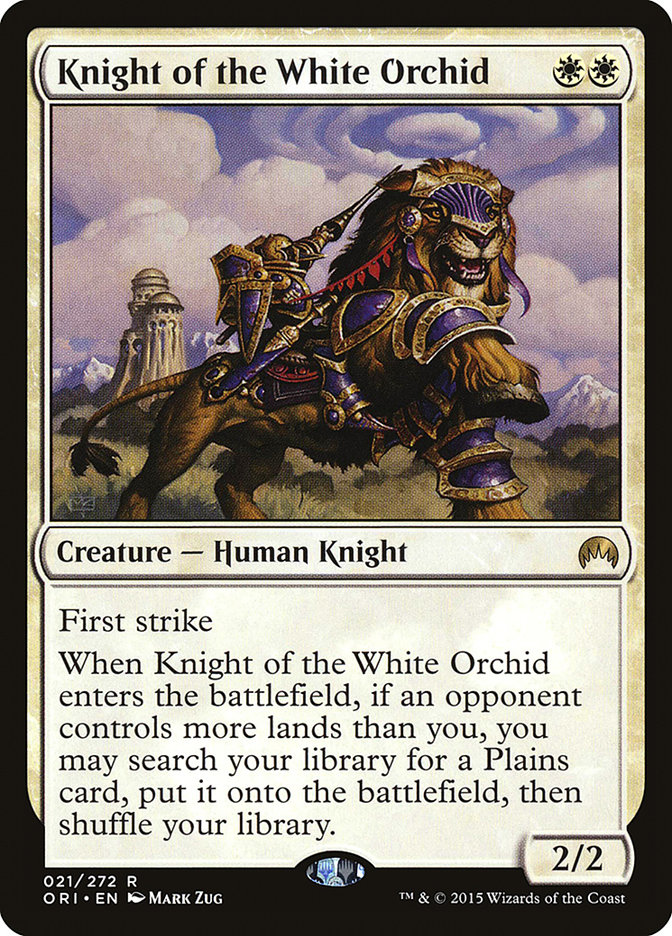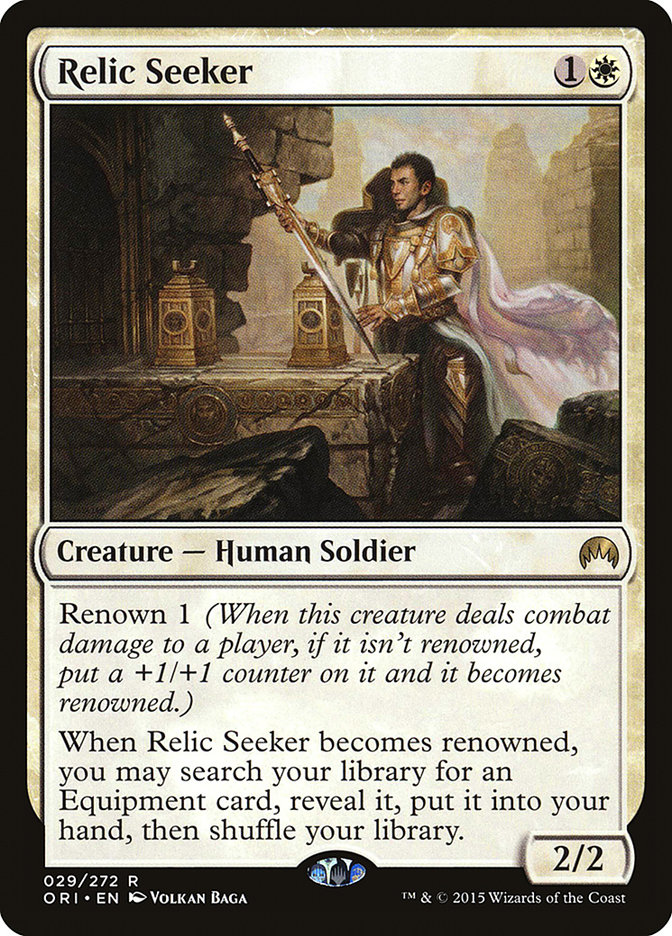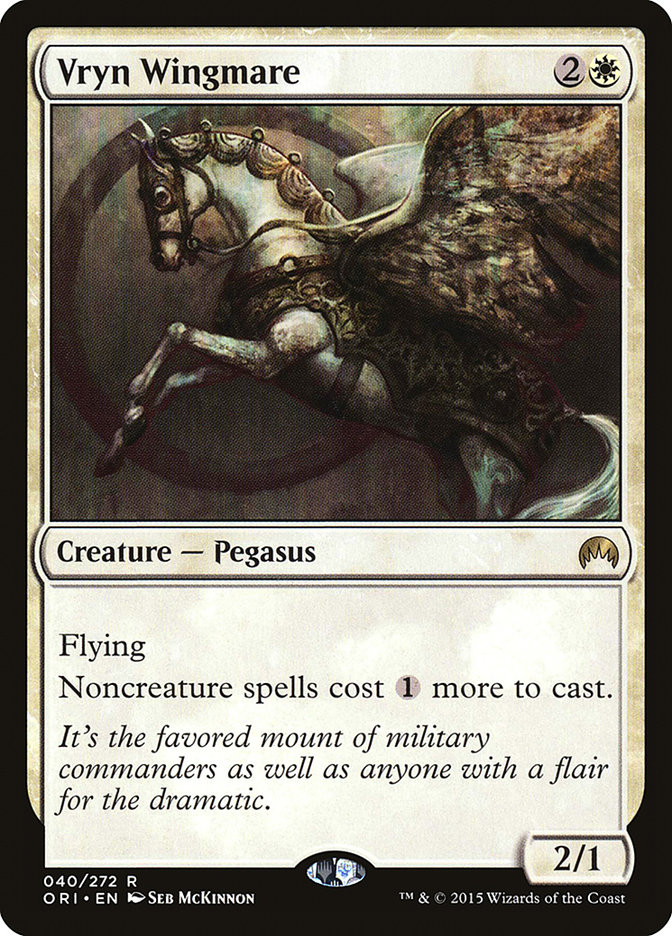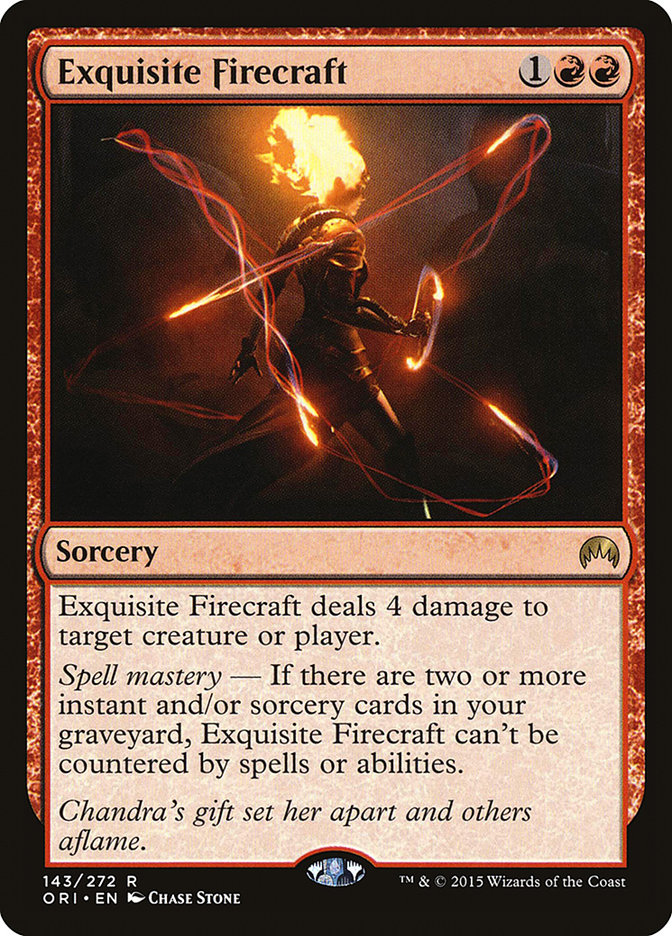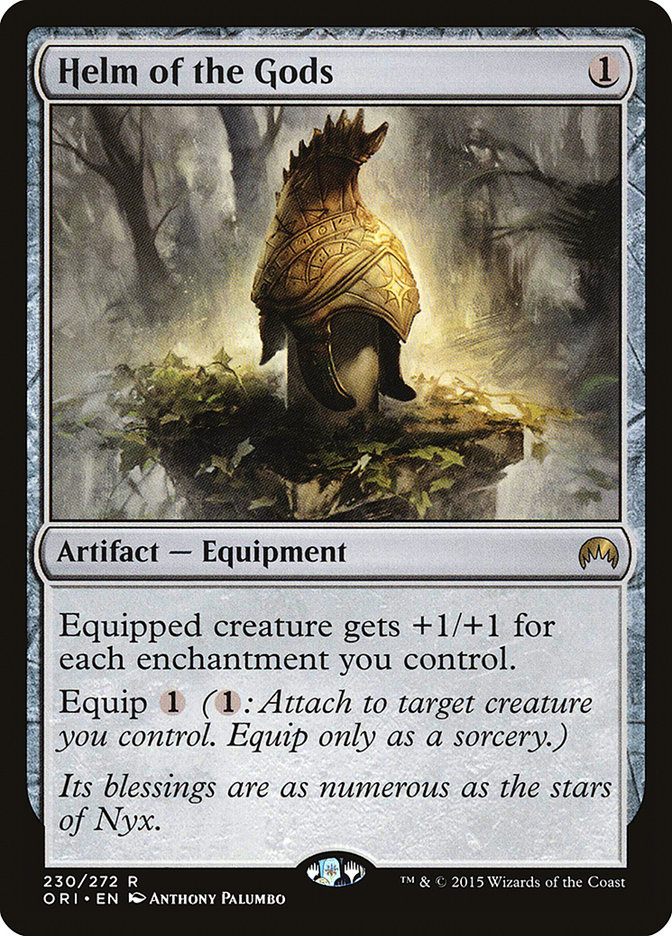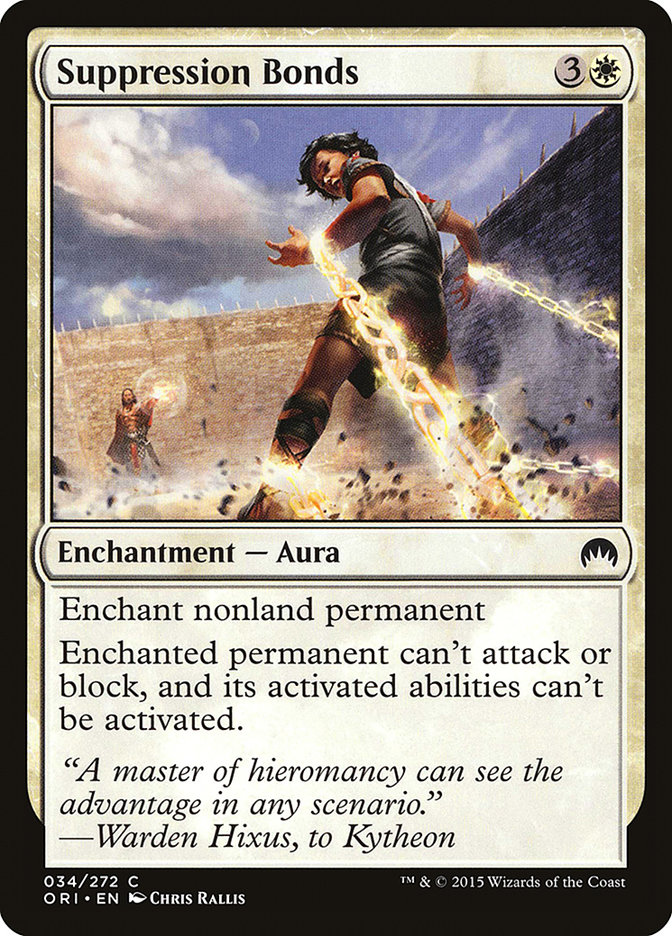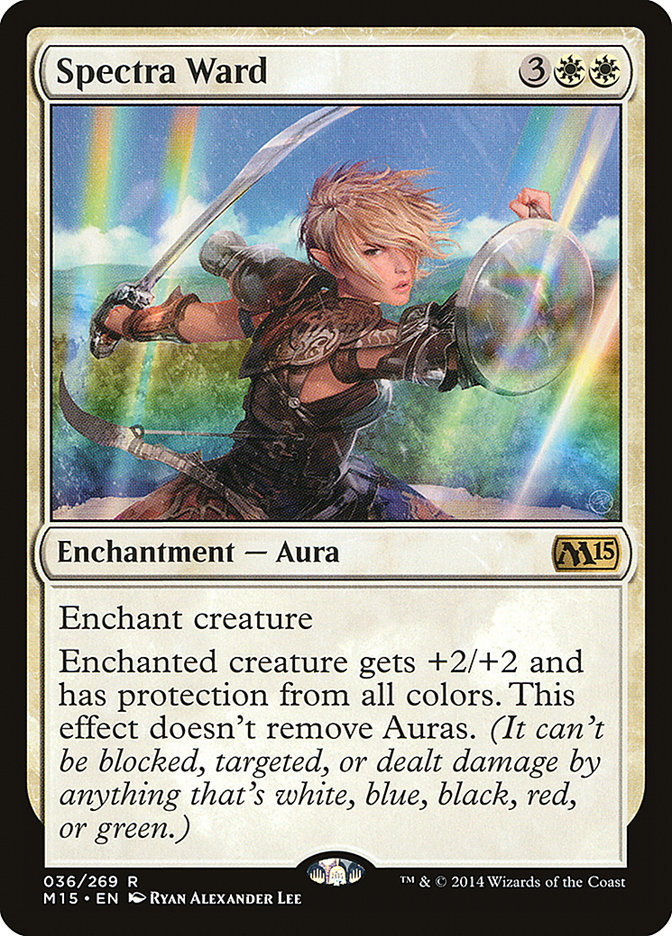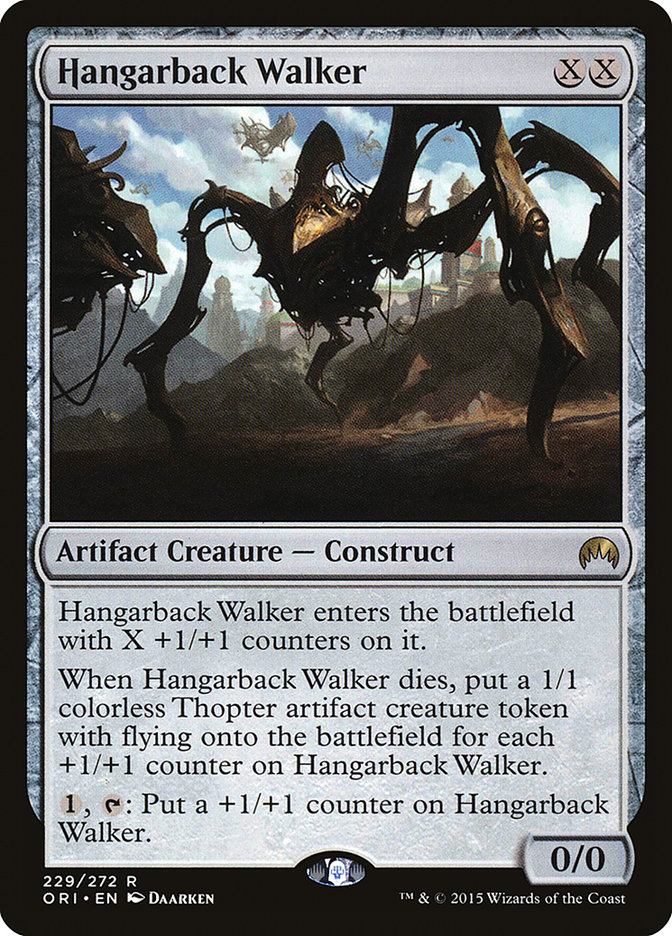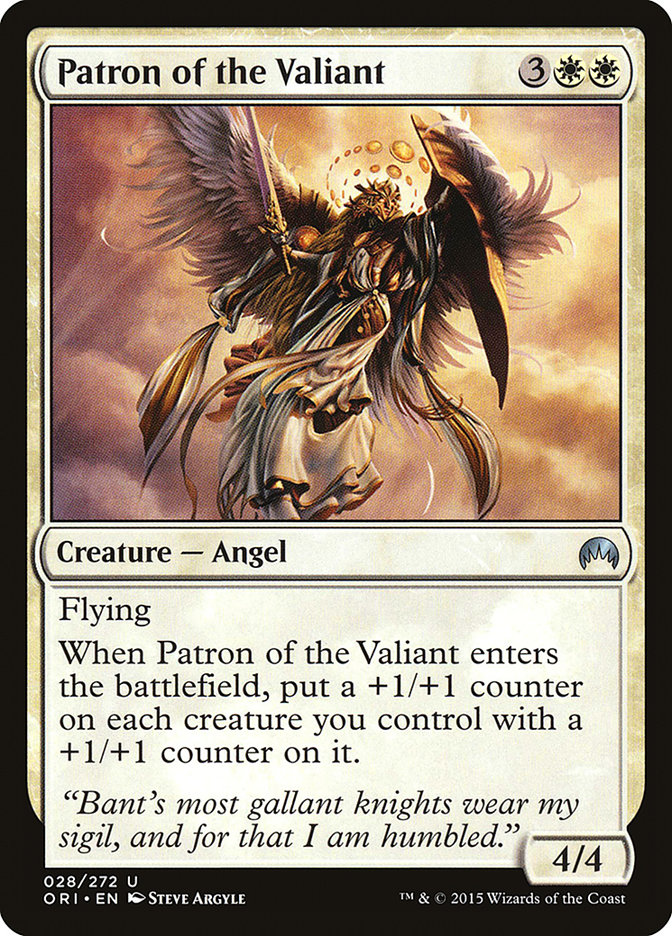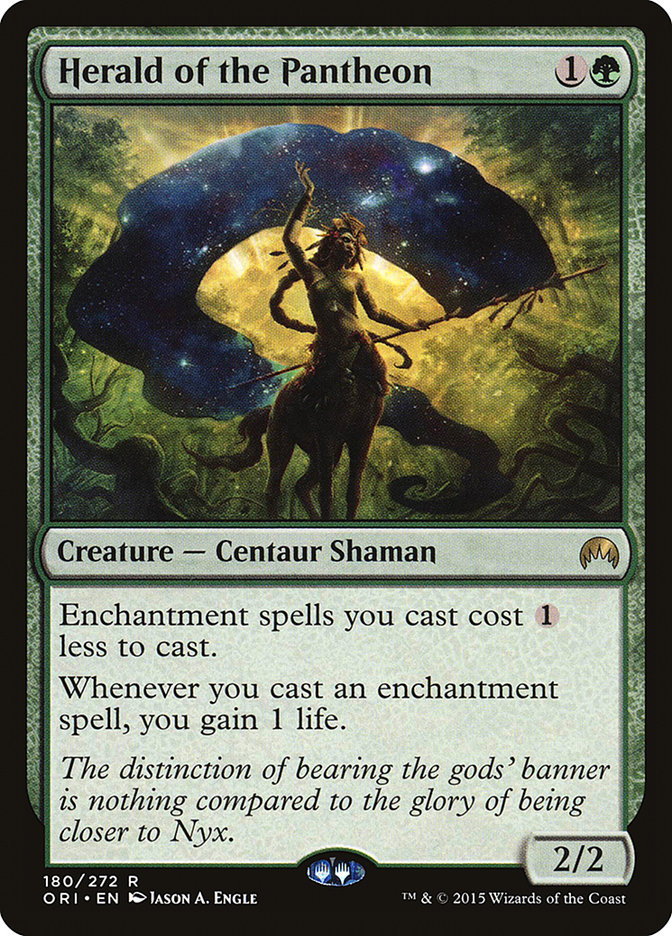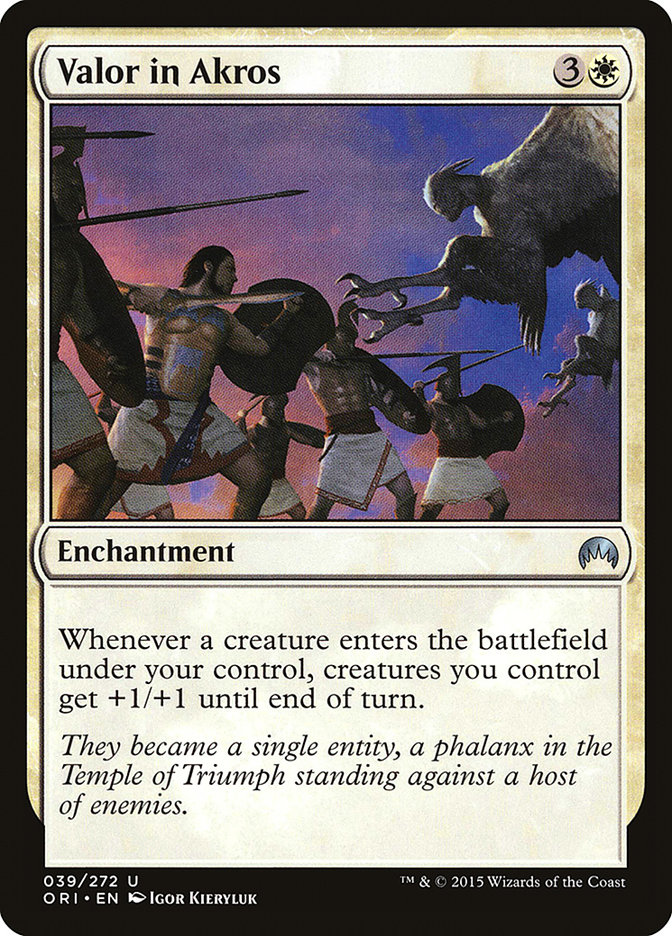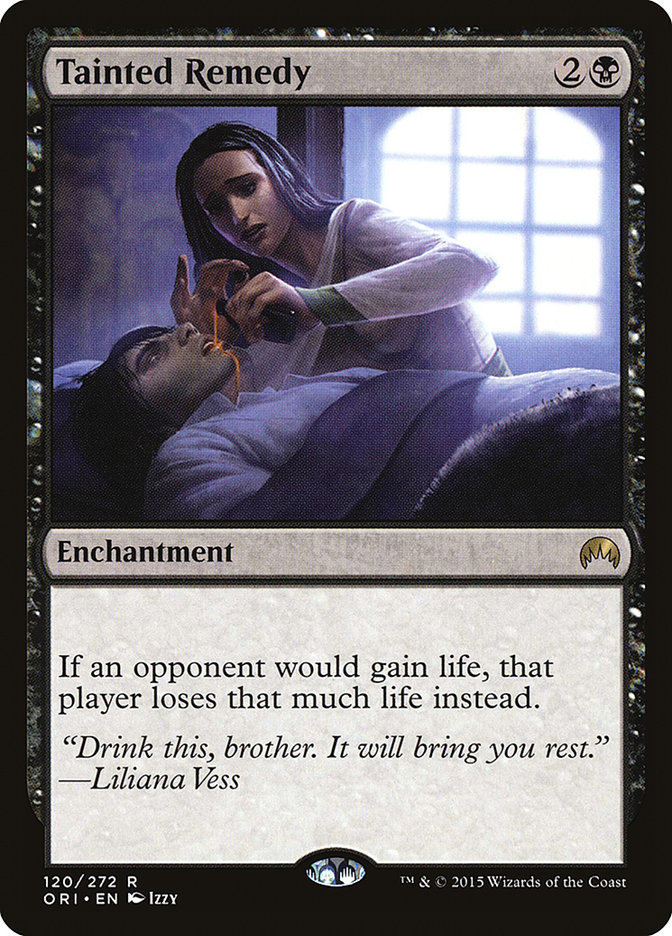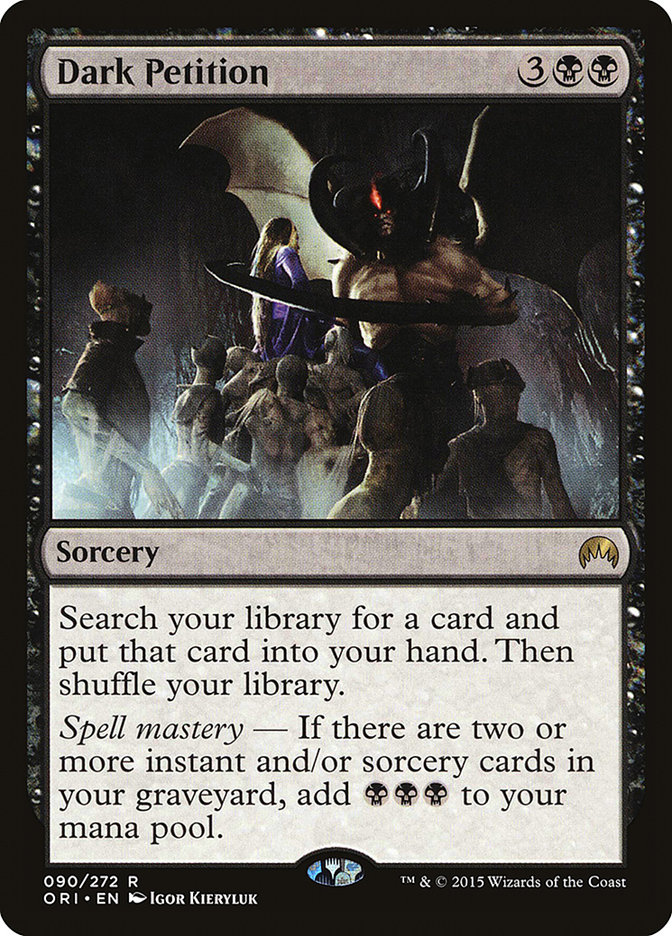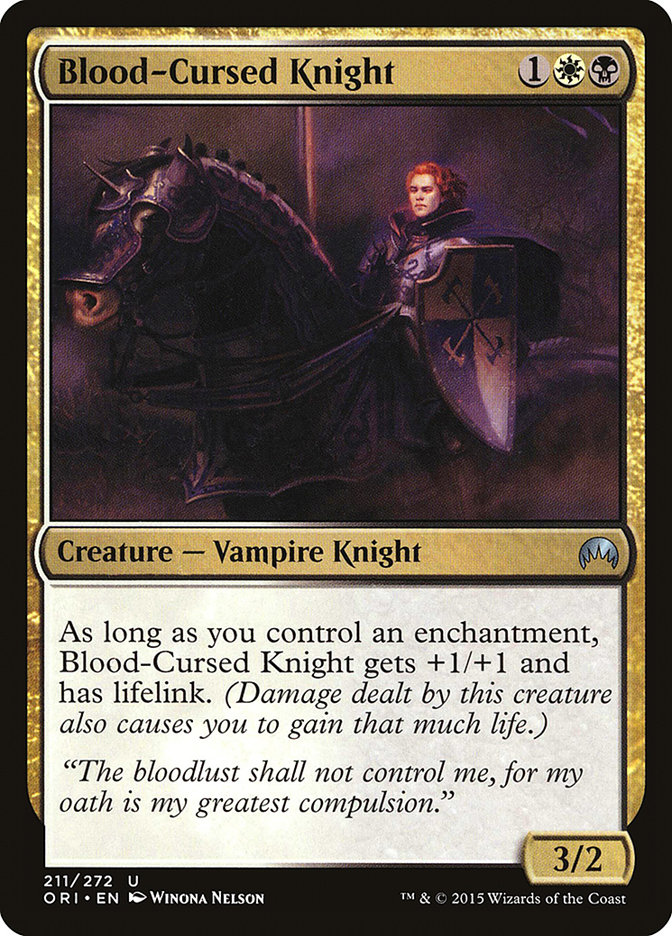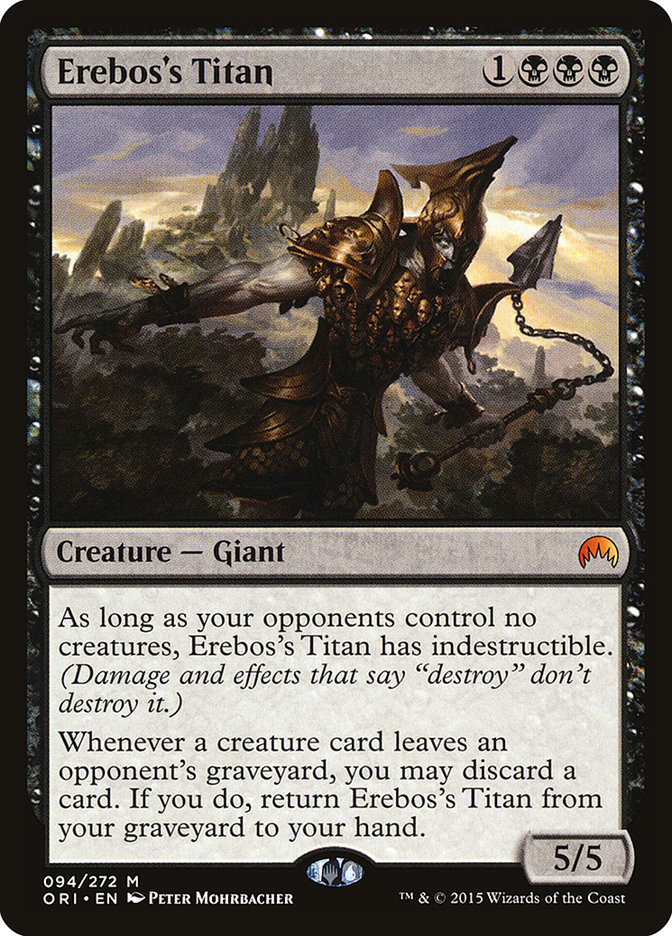I can’t remember the last time a set added at the end of a rotation had as big of an impact as Magic Origins will. They have really pulled out all the stops for this one. Figuring out what the format of the future looks like begins with understanding how to use all of the new cards. It’s not about swiping right or swiping left. It’s more like “Learn All The Things!”
The more we understand how to use all of the new cards, the more we’ll gain an understanding of what we believe the rest of the world’s perception will be. That means focusing on power, synergy, and consistency for now. What deck beats what deck comes later.
Today, I’m going to be focusing on white. We covered blue on Monday, and I’ll be back Friday with the rest (which isn’t as imbalanced as it sounds, with how many non-white cards as we’re discussing today, since a lot of white decks are not mono). What better place to start that with one of the most hyped cards in the set, Kytheon, Hero of Akros?
To start with, Kytheon is a 2/1 for one, so already I’m at least interested. It doesn’t take much more to be playable, and it could be a lot better than that.
Next, we factor in that Kytheon has 2W: Indestructible until end of turn. This ability is amazing, and quietly why Kytheon is gonna be a serious winner. As the game goes on, Kytheon gives you something productive to do with your extra mana that has a serious impact on the game. On offense, it means Kytheon can attack without serious risk of dying (which also ensures he can flip safely, later).
Kytheon can be a monster on defense, potentially eating small attackers and living or holding off their largest threat as long as it takes. He’s also difficult to kill with removal spells. Sure, you can often power through it, perhaps with a second Lightning Strike; but remember, we’re talking about a one-drop here. Drawing Kytheon early is good because he’s two power for one mana, but drawing Kytheon late is also good because he’s so hard to kill.
That Kytheon is a legend is a real cost, but the indestructible ability is worth more. Even if Kytheon could never flip, he’d at least be playable. He’s even good creature types and there are rewards for playing legends these days. Besides, once he does flip, you can play a second copy without any problem. They have different names, and unlike some of the others, you aren’t really at risk of him flipping against your will.
How good is the flipside?
Well, the baseline is the 4/4 body immune to sorcery-speed removal and damage from blockers. It can’t block and can be attacked, so it’s not without counterplay. However, both abilities are useful for advancing the game while also defending Gideon.
His +2 ability gains loyalty fast, helping Gideon live while also potentially eating away at opposing boards. I particularly love combining it with Brimaz and Knights with First Strike.
His +1 ability is very interesting, and surprisingly versatile. Used on an attacker, it can ensure safety to creatures with attack triggers like Brimaz and Consul’s Lieutenants; both from blockers and from attack-only kill spells like Swift Reckoning. It even provides defense against sorceries such as End Hostilities!
It can also give creatures pseudo-Vigilance, ensuring someone can stay home to defend Kytheon while still getting in for damage. To get the untap, you have to use the ability after combat, so that aspect works particularly well with creatures that are already not at serious risk of dying in combat such as Archangel of Tithes. It’s also awesome that the Archangel gets to attack, making blocking you hard, while still being untapped to making attacking you hard.
There is an unfortunate interaction to be careful of with these two. The Archangel’s first ability disrupts Gideon’s +2 ability. If you try to force someone to attack Gideon, they can just “choose to not pay,” and now you don’t get to eat their creature in combat.
I still love Archangel of Tithes though. A 3/5 flier is a fantastic allocation of stats (sort of the opposite of 1/7 or 6/2). It’s big enough to live through Stoke the Flames and Exquisite Firecraft yet ducks right under Elspeth. It even dodges Roast, since it flies. The ability is deceptively strong, not only crippling token-based strategies but also making it very hard to block all of your creatures in an alpha strike.
What about Kytheon?
Well, Kytheon isn’t really at risk of flipping when you don’t want him to. Yes, you are occasionally going to miss some damage by not attacking in game states where you can afford to have him flip; in general, his ability is a very serious bonus to put on a one-drop (particularly one that was already good).
Verdict: Staple. Flagship. This card is amazing.
There are a ton of potential homes for Kytheon. Really, any deck with reasonable chances of casting it on turn one, and reasonable chances of ever flipping it, it’s worth considering.
Here’s a White Weenie deck that mostly focuses on card quality and a good curve:
Creatures (32)
- 4 Knight of the White Orchid
- 4 Soldier of the Pantheon
- 4 Brimaz, King of Oreskos
- 4 Mardu Woe-Reaper
- 2 Hidden Dragonslayer
- 2 Anafenza, Kin-Tree Spirit
- 4 Kytheon, Hero of Akros
- 4 Archangel of Tithes
- 4 Consul's Lieutenant
Lands (22)
- 22 Plains
Spells (6)

White has gained so many great cards in Magic Origins, it’s hard to know where to start. This build has plenty of minor synergies, but is really just about using all of your mana every turn efficiently.
While we have twelve here, I always consider using eleven one-drops, as it is one of those magic numbers that gives the optimal balance between “higher chances of having one” but “lower chances of wasting mana in the mid-game after playing all of our cheap cards.” To this end, I considered trimming a Kytheon (after all, he is a legend), but he seems enough better than Soldier of the Pantheon and Mardu Woe-Reaper to risk the fourth copy. If we wanted to cut one, I think I would cut one of them instead.
Take that, Deathmist Raptor!
Kytheon is awesome, but what really gives us new reason to look at White Weenie are the new two-drops in Magic Origins. We’re not usually going to be able to fit all three into the same deck, but you never know.
Knight of the White Orchid is going to get you an extra land less than half the time, but it’s still a 2/2 first striker and the games where it does, that is often a free Mox Pearl. It’s a stronger card on the draw, but I would still choose to play first just in general. If you have plenty of mana and no other two-drops, it is a totally fine play on two, but we are typically going to be looking to play it on turn three or four, depending on if we can afford to miss a land drop on turn three (if we were on the play).
Consul’s Lieutenant is really exciting to me, but it is interesting finding the balance between removal (to get it through) and creature swarm (to capitalize on the AOE +1/+1). This might not be enough support to get it through, but Gods Willing, Kytheon, and Archangel of Tithes do help. Besides, First Strike does a pretty good job on its own.
Relic Seeker may not be Stoneforge Mystic, but it is pretty great. Upgrading your 2/2 into a 3/3 is a little worse than a 3/3 for two (which we would definitely play), but it also draws you a card (with selection) a substantial amount of the time. That’s huge! Relic Seeker also asks you to play a package of equipment to go get. I think the bare minimum is two pieces of equipment, but if there’s a third we like, that’s preferable.
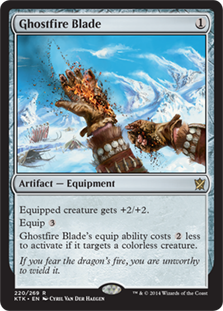
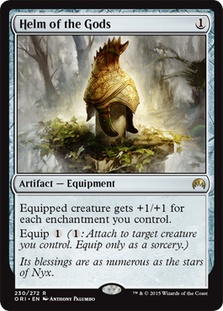
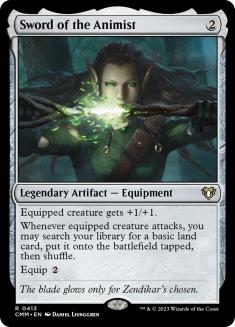
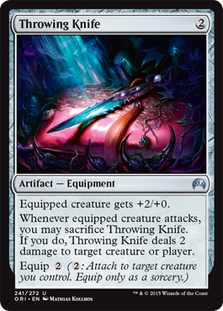
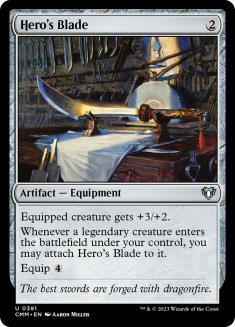
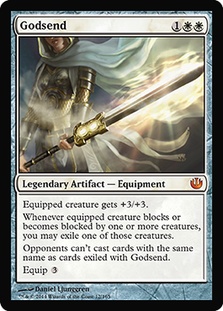
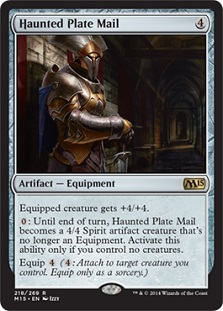
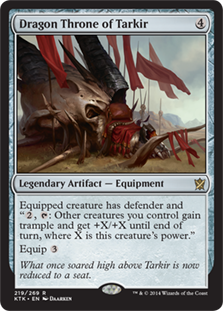
Ghostfire Blade requires a fair number of artifact creatures or morphs to justify it, but could be good. Likewise, Helm of the Gods asks us to be heavy into enchantments (a card we’ll build around later today).
Sword of the Animist doesn’t excite me as much as it does some people. I dunno. I mean, it’s fine, I guess. It just seems so much worse than a Sword – like way, way worse – and even though Sword of Body and Mind is probably asking too much, I think this might be a minor role-player until this fall (when landfall probably returns). If Sword of the Animist is actually great right now, it is probably because of the acceleration aspect. After all, this is a sweet card for Thopter decks with an expensive high end…
Throwing Knife is probably too expensive. It’s just interesting because of how novel the effect is.
Hero’s Blade is awesome even if you have just eight legends in your deck (we have ten here, just remember that it doesn’t attach to Gideon, Battle-Forged). It’s a ton of stats for cheap in those cases, and even when you don’t draw one, it’s still useable. This is a great target for when we don’t have much time to work with.
Godsend is a little slow, but it can really take over a game. This is my favorite target to go get if we do actually have time to spare. On offense, your creature is functionally invincible. On defense, they are The Abyss.
Haunted Plate Mail gives us a creature to search up against removal-heavy decks and sweepers. I’m not 100% that it isn’t too slow, but it is definitely worth trying.
Dragon Throne of Tarkir is an oddball, but it is extremely good at dominating some stand-offs. I don’t want it here, as Godsend probably does enough for those games, but it is one to keep in mind.
Here’s a version making room for Relic Seeker, though maybe we still need the Knight of the White Orchids to help pay the equip costs:
Creatures (25)
- 3 Soldier of the Pantheon
- 4 Brimaz, King of Oreskos
- 4 Mardu Woe-Reaper
- 2 Anafenza, Kin-Tree Spirit
- 4 Kytheon, Hero of Akros
- 4 Relic Seeker
- 4 Consul's Lieutenant
Lands (23)
- 23 Plains
Spells (12)

This version is even more dependent on getting its creatures through, leading to Banishing Lights maindeck. I like blanking Dromoka’s Command, but at a certain point you just need the removal.
This version has even more dead cards against creature-light opponents, so we are interested in some kind of a threat we can sideboard in against those people. Vryn Wingmare is perfect, as it specifically punishes creature-light decks. It’s not as good as Thalia (three is a lot more than two), but Flying is better than First Strike and this is a very fun card to stack multiples of (as long as they are yours).
Kytheon’s more than just a great one-drop. He’s a Soldier!
Creatures (23)
- 3 Favored Hoplite
- 4 Soldier of the Pantheon
- 4 Brimaz, King of Oreskos
- 4 Anafenza, Kin-Tree Spirit
- 4 Kytheon, Hero of Akros
- 4 Consul's Lieutenant
Lands (22)
- 22 Plains
Spells (15)

Kytheon provides a much-needed additional one-drop for Soldier Tribal decks, and Consul’s Lieutenant gives us enough playables to actually build the deck. It also has amazing synergy with Raise the Alarm and Launch the Fleet!
Favored Hoplite is a pretty lame card in this deck, but we really want to curve out. The other option (among Soldiers) is Herald of Anafenza, but that one seems like it costs too much for us to rely on (and the tokens are not soldiers). Nevertheless, Favored Hoplite might be so bad that we end up with the Herald anyway.
The alternative is a non-Soldier one-drop (probably Mardu Woe-Reaper), and it would still help us cast Obelisk, it just wouldn’t get the bonus. Maybe that’s OK.
Phalanx Leader is an interesting possibility, but would probably require more spells to target our creatures (maybe four Defiant Strikes and a couple of Gods Willing). That would make the Favored Hoplites better, but I don’t know how you make the room and keep enough creatures to Obelisk. You can shave some twos, but those are some of the best cards in the deck.
One concern I have with Obelisk of Urd decks is the increased number of Disenchant effects going around right now. There are more targets for people to kill and Reclamation Sage is an Elf (and will be quite popular).
Of course, Kytheon doesn’t need to get fancy. Here’s a straightforward W/R Aggro deck that puts him to good use:
Creatures (24)
- 4 Soldier of the Pantheon
- 4 Goblin Rabblemaster
- 4 Seeker of the Way
- 4 Mardu Woe-Reaper
- 4 Kytheon, Hero of Akros
- 4 Consul's Lieutenant
Lands (22)
Spells (14)

I’m actually pretty excited about this direction. This is just such a nice collection of powerful cards. Note: While we could cast Zurgo Bellstriker or Monastery Swiftspear, we really want to play Consul’s Lieutenant on turn two. Battlefield Forge and Mana Confluence help, of course, but it would suck to have to play a Mountain on turn one.
An excellent card. It’s totally cuttable or trimmable depending on what we’re looking for, but it’s generally stronger than Lightning Strike, which is high praise.
Scab-Clan Berserker is going to show up in a lot of maindecks, but it’s also a great sideboard card against slower decks. It’s often going to be hard to kill without losing value, and it hits pretty hard in general.
Here’s an alternative direction to go with Boros that I think is just too flawed at the moment, but might hint at something better.
Creatures (19)
Lands (22)
Spells (19)

Blessed Spirits is probably more of a limited card, but I wanted to give it a shot since there are a fair number of new enchantment rewards.
Putting a Dragon Mantle and an Infectious Bloodlust on our Favored Hoplite and getting paid extra by the Spirits is cool, but is it really better than Monastery Mentor? Hell, is it even better than Graceblade Artisan?
Infectious Bloodlust is sweet though. I wanted to try it in a number of places. Its power level is modest, but it’s probably better than most people think it is.
This one seems sweet to me. It might end up being the best card in a lot of bad decks, but they are the type of decks that go from joke to broke real quick.
If we are desperate for a Heliod’s Pilgrim target to deal with planeswalkers (or artifacts, or enchantments), we could consider Suppression Bonds; but it’s pretty expensive considering how much enchantment removal is out there.
Another expensive aura to keep in mind is Spectra Ward, making our creature very difficult to deal with. I’m only lukewarm on it, though, as people play a lot of sweepers, Edict effects, and of course enchantment removal.
I tried building a mono-color version and ended up using a copy of Spectra Ward to help close out games:
Creatures (23)
- 4 Favored Hoplite
- 4 Hopeful Eidolon
- 4 Hero of Iroas
- 4 Spirit of the Labyrinth
- 4 Heliod's Pilgrim
- 3 Blessed Spirits
Lands (23)
- 23 Plains
Spells (14)

Hopeful Eidolon makes Spectral Ward a lot better (particularly when the creature has Helm of the Gods on it). Hopeful Eidolon and Spirit of the Labyrinth combo with Blessed Spirits in ways Monastery Mentor doesn’t, which is something. It’s probably still not worth it, though. Be careful not to play Sage’s Reverie when the Spirit of the Labyrinth is in play or you will miss out on the card draw.
I haven’t seen a Helm of the Gods deck I like yet, but there is another linear aggro deck that received a nice boost in Magic Origins.
Creatures (24)
- 4 Chronicler of Heroes
- 2 High Sentinels of Arashin
- 4 Abzan Falconer
- 3 Anafenza, Kin-Tree Spirit
- 3 Patron of the Valiant
- 4 Hangarback Walker
- 4 Consul's Lieutenant
Lands (24)
Spells (12)
Sideboard

There are a lot of incentives for +1/+1 counters, and Magic Origins has some great options for good +1/+1 counter creatures.
Hangarback Walker is a durable and eventually potent threat on its own, as well as a reliable +1/+1 counter body; but it’s also a +1/+1 counter “payoff” since every +1/+1 counter it gains from Dromoka’s Command, Anafenza, High Sentinels, Feat of Resistence, or Gleam of Authority is another Thopter later.
Patron of the Valiant is a respectable threat in its own right, but even if they kill it the damage is done. In a deck like this, it’s generally going to leave behind a permanent +1/+1 to your team.
The challenge here is the lack of one-drops. Are we supposed to just use random one-drops that are off-theme? Kytheon and Warden of the First Tree are options. Of course, we could make green our main color:
Creatures (26)
- 4 Elvish Mystic
- 4 Reverent Hunter
- 4 Chronicler of Heroes
- 1 Ainok Guide
- 4 Avatar of the Resolute
- 4 Servant of the Scale
- 1 Patron of the Valiant
- 4 Hangarback Walker
Lands (23)
Spells (12)

Hangarback Walker is seriously filthy with Hardened Scales. It’s not just starting as a 2/2, but also getting +2/+2 per turn, with the threat of two extra thopters.
Yet another G/W linear deck to try is something built around Starfield of Nyx.
Creatures (16)
Lands (24)
Spells (20)

Starfield of Nyx is more than just a victory condition, it’s also a source of card advantage that works great with enchantment creatures as well as self-mill cards – which makes me wonder if Satyr Wayfinder or Commune with the Gods should be moved in here to go alongside Kruphix’s Insight.
Herald of the Pantheon is an excellent reason to go hard on the Constellation theme. The acceleration starts getting really out of hand with Eidolon of Blossoms, but just playing two cards in the same turn more often or casting fives a turn early is well worth it. The lifegain also adds up alongside Nyx-Fleece Ram and Courser of Kruphix to buy us a lot of time.
This is far from the only white-enchantment-based deck to look at because of Magic Origins.
Valor in Akros has enough similarities to Jeskai Ascendancy that it makes me wonder if there’s a deck with both?
Creatures (5)
Lands (25)
Spells (30)

Valor in Akros is certainly slower and weaker, but it can be explosive with big token makers like Hordeling Outburst and Secure the Wastes. Maybe we have access to enough of this type of thing to play out like a sort of combo deck?
That said, if we want to actually do the whole “combo thing” all the way, maybe we should be building around:
Tainted Remedy is ostensibly to fight against lifegain (Courser + Rhino, maybe Whip of Erebos), but it’s also a nasty combo with Congregate – which can target your opponent to force them to gain life. While this is sometimes the full amount by itself, more often it just gives us a way to chunk our opponent for twelve relatively early on.
Dark Petition is probably going to be more popular in heavy black board-control decks, but it’s also a legit way to assemble combos such as this. It’s stronger than most Diabolic Tutor variants, as three mana the turn we are tutoring gives us most of the tempo we just spent back.
It’s not hard to arrange to have at least two sorceries and/or instants in our graveyard by turn five, which lets us drop a tutored-for Tainted Remedy that same turn. Alternatively, we can Petition on turn six and Congregate that same turn. Just remember that multiple Tainted Remedies don’t stack.
Creatures (20)
- 4 Ajani's Pridemate
- 4 Soldier of the Pantheon
- 4 Seeker of the Way
- 4 Mardu Woe-Reaper
- 4 Blood-Cursed Knight
Planeswalkers (1)
Lands (23)
Spells (16)

This list tries to play a bit of a “Soul Sisters” gameplan for when we don’t yet have the combo. The aggression helps increase the chances that our combo actually finishes the combo too.
Blood-Cursed Knight is a pretty sweet option and doesn’t actually need that many enchantments to work. I could also see it in an aggressive aura-based aggro deck, such as:
Creatures (30)
- 2 Tormented Hero
- 4 Herald of Torment
- 4 Spirit of the Labyrinth
- 4 Spiteful Returned
- 4 Gnarled Scarhide
- 4 Underworld Coinsmith
- 4 Bloodsoaked Champion
- 4 Blood-Cursed Knight
Lands (22)
Spells (8)

It’s not that the Knight’s power level is off the charts or anything. It’s just a nice solid card that gives black decks what they actually want (a playable cheap creature that can block, and lifegain), and it asks of us something that isn’t hard to do. Besides, even the fail state isn’t that bad.
Alternatively, maybe there is some weird build of Black Devotion that fuels all its life loss cards with the lifelink from the Knight:
Creatures (20)
- 4 Gray Merchant of Asphodel
- 1 Erebos, God of the Dead
- 4 Herald of Torment
- 3 Nyx-Fleece Ram
- 4 Blood-Cursed Knight
- 4 Erebos's Titan
Planeswalkers (3)
Lands (25)
Spells (12)

Ahh, yes. The Nyx-Fleece Ram + Herald of Torment deck the metagame has been waiting for…
Look buddy, you said the same thing about Soldier of the Pantheon into Elspeth and Fleecemane Lion also into Elspeth. This deck has Elspeth, and that makes basically anything possible.
While the above list doesn’t make the greatest use of Erebos’s Titan, it’s still a 5/5 for four that provides a lot of devotion to black. It’s also immune to a lot of removal when your opponent has no creatures, which includes when you use instant speed removal in response to theirs (which points to another flaw in the above list).
The recursion ability on Erebos’s Titan looks more impressive than it is since it neither gets the Titan onto the battlefield nor provides any actual card advantage. As such, it is not the end of the world if your Erebos’s Titan deck doesn’t have any natural combos to “do the trick.”
That said, it can give you extra options against delve and the plethora of graveyard recursion creatures out there. And there are definitely going to be plenty of decks that look for natural ways to get it back without having to use any bad cards. For instance, Pharika, God of Affliction is a reliable way to make sure your Titan is never stuck dead. If you discard Deathmist Raptor, Bloodsoaked Champion, or Despoiler of Souls, you are gaining virtual card advantage anyway.
Erebos’s Titan is also a pretty nice mix of stats for the current format, particularly if you plan on casting Languish. It holds off the ground, creating a build up as your opponent has to over-commit, then it lives through the -4/-4. Languish alongside five-toughness creatures is very exciting, and perhaps nowhere as loudly as Siege Rhino decks.
Creatures (15)
Planeswalkers (3)
Lands (26)
Spells (16)

Abzan gaining Languish is going to create ripples that have subtle and profound impacts on the way we build decks. For instance, Tasigur, the Golden Fang is more attractive now because of his synergy with Languish, which then makes Satyr Wayfinder more attractive.
The Elvish Visionaries are an experiment, I want to try them out at some point but this might not be the best home. We could also cut them and a land to make room for three Satyr Wayfinders and a Tasigur, the Golden Fang.
OK, we still have a ton of cards and decks to cover, so join me back here Friday. Also, let me know what the most underrated card and the most overrated card in Magic Origins is. See you then!

